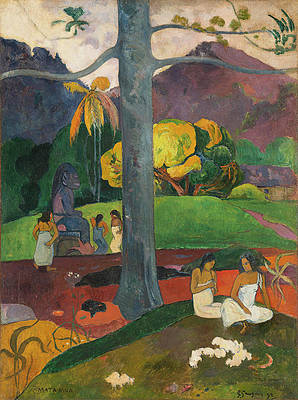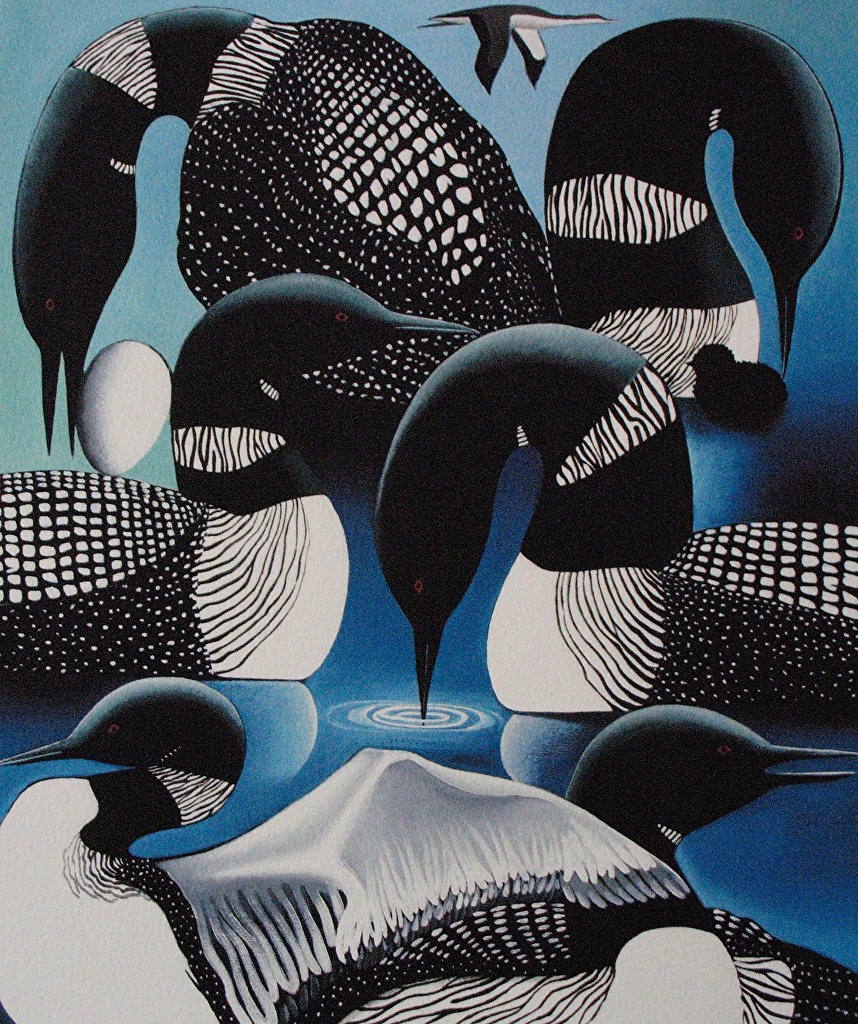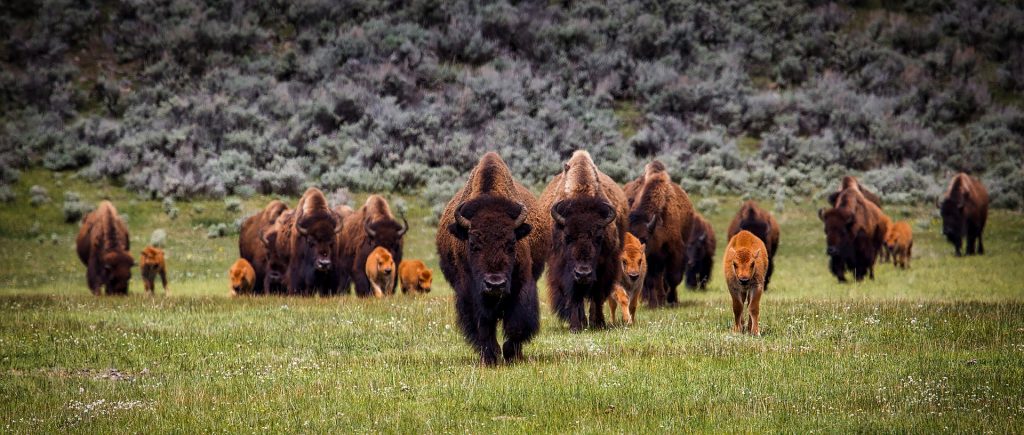How Not to Lose the Elephant for All its Parts
The elephant lives through trunk and skin at its body’s boundary in intensive tactile contact with its surroundings. Watching a herd of elephants you see continual interaction—caressing, pushing, slapping, probing. And through its keen senses of smell and hearing, and its trumpeting calls and infrasound rumbles, the elephant enters a truly expansive world.
The trunk unites power and agility in singular fashion. We find this unity of largeness and delicateness, of enormity and sensitivity, in modified ways in nearly all elephant characteristics. With its finely modulating feet, a soft-treading elephant has little trouble moving silently through a forest, but can, in another moment, crash through the forest, bowling over trees or crushing a lion under its foot. The thick, leathery skin that appears so tough is also extremely sensitive, warranting continual care. The large, constantly moving ears are ideal for taking in and locating tones coming from afar, but can also hear the quietest tones and distinguish between subtle modulations. The elephant’s unified being speaks through contrasts.
There is no more physically flexible organ in the animal kingdom than the elephant’s trunk. While the trunk is clearly the elephant’s focal instrument for living out its flexible nature, this paramount elephantine feature in fact expresses itself in the whole animal—physically, physiologically, and behaviorally. The elephant does not have to eat food of one type, it can shift from one food source to another; when given the opportunity it goes for variety. The elephant can live in different types of habitats—from the climatically uniform and food-rich rainforest to the extremes and dearth of the desert. But most elephants live in the more rhythmically changing savannah and monsoon climates, where they move with the changing seasons and the changing sources of food the seasons bring.
An elephant changes throughout its long life. Its primary growth phase lasts around two decades, but it continues to grow slowly until death. The tusks grow throughout its life, and, like no other mammal, the elephant’s change of teeth in the molars never stops. There is an ongoing development of the new and discarding of the old, continuous physiological renewal. At the behavioral level we find this characteristic mirrored in the elephant’s pronounced and lifelong learning ability. At any moment the elephant can adjust to new situations with its own unique form of intelligence.
In their family groups, elephants have intense contact and learn from one another. They go through a long phase of maturation and then develop different relations within the group as they grow older. The life of a young mother is very different from that of an older female or of the group matriarch. Or think of the orphaned aggressive young bulls that altered their behavior soon after older bulls entered their home range. In the elephant, the ability to change never ceases.
You have now participated in my attempt to portray the elephant as a unique and unified being. I’d like to highlight here some of the features of my method. “Method” is a horribly dry term to express what I do to try to gain deeper glimpses into the way of being of an animal. What do I attend to and what do I try to avoid? (I’ll say more about my approach throughout the book and summarize it in the concluding chapter.)
Apprehending wholeness demands a particular kind of attention and inner activity. First, when I have come to a certain understanding of some detail, instead of just progressing further in analysis I make myself—which is not easy—step back and ask, “How does this relate to the whole?” I may not yet have an answer, but by trying to place every detail into the larger context, I make sure I am not losing sight of the animal in all its parts.
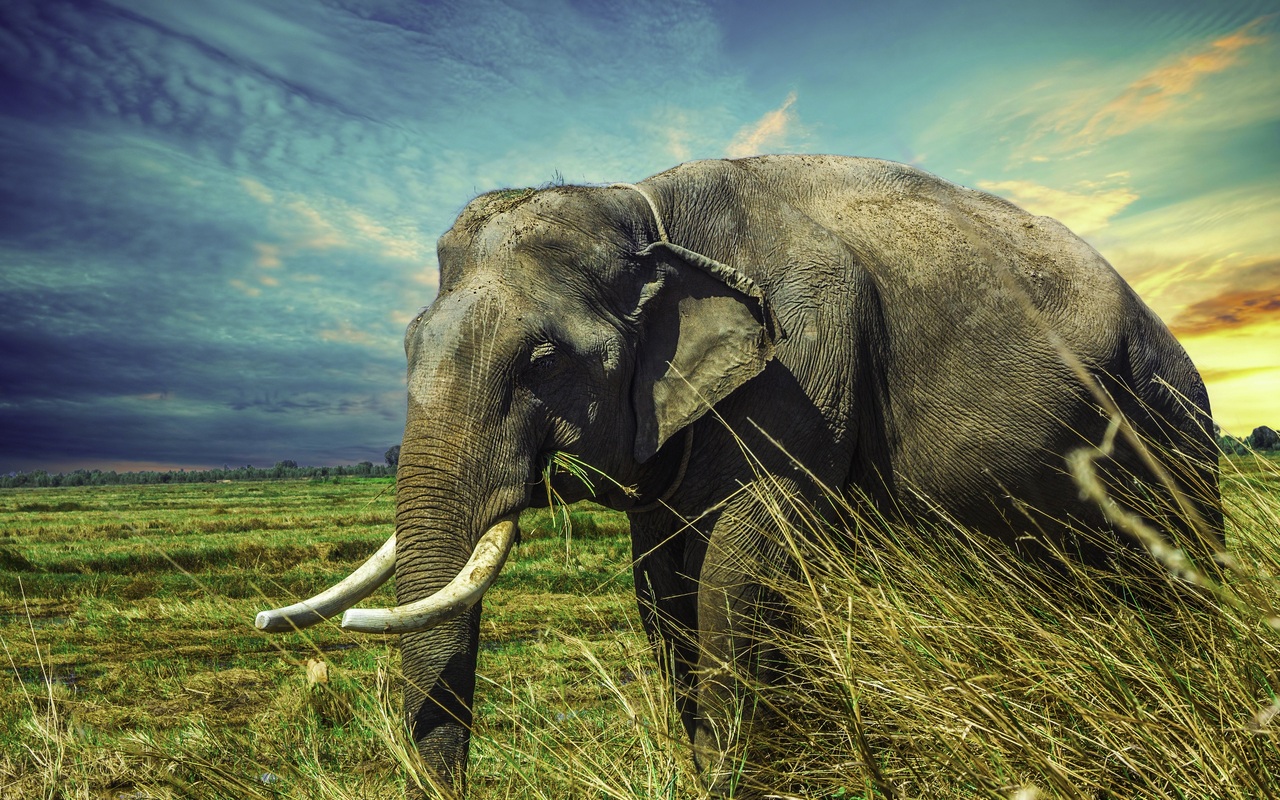
Second, I try to withstand “explaining,” by which I mean, in this context, finding a surmised single cause of the phenomenon I’m looking at. For example, when I look at the fact that elephants have very long straight legs I may be tempted to “explain” this fact by saying it is an efficient construction that enables such a large animal to bear its weight with minimal muscular exertion. In Darwinian terms, this characteristic gives the elephant greater survival chances. But since I also know that the weighty hippopotamus has short angular legs, and survives in its way just fine, the “explanation” loses its compelling force. And this happens with virtually all single-cause explanations I have encountered. They just don’t work. As far as I can tell, every biological fact has multiple relations that illuminate its function or form. Since single-cause explanations are usually false and tend to fix the mind in narrow pathways, I don’t look for such explanations. When I find authors using them, I discard the explanation and let the phenomena stand on their own.
So with the iron will to always return to the whole and the discipline to hold back from shortcut explanations, I keep the path to the unity of the organism open. But to grasp this unity a third kind of activity is necessary. When I am studying a given phenomenon or reading what others have discovered, I make as vivid a mental picture as possible. I picture the exact form of the limb bones and how they articulate; I picture how the elephant feeds; I picture the formation of the teeth. Or when I have experienced a young bull making a mock attack and am later writing down my observations, I make sure I build up anew a vivid picture of what I have seen. By utilizing imagination and staying as close to the phenomena as possible, I try to create an exact picture. The goal is to achieve saturated inner images of the elephant’s characteristics.
The remarkable thing is that when one builds these exact pictures over and over, moving from one characteristic to the next, patterns emerge. You begin to recognize how the characteristics form a whole—the unity begins to reveal itself. When you go back to characteristics you have studied before, they may suddenly express the unity you have discovered through another part. For example, over time I began to see that the elephant not only has a flexible trunk, but that flexibility is part of its whole being—flexibility in feeding behavior, flexibility in social interactions, flexibility in learning overall, and even flexibility rooted in the anatomy of its immense feet. Characteristics such as the long phase of growth, the long period of social maturation, the virtually lifelong change of teeth, and the lifelong learning capacity no longer appear as separate traits, but as expressions of a unitary being. When I have begun to grasp the elephant in this way as an interconnected whole, I can then set about describing and characterizing it. My goal is, in Goethe’s words, to “portray, rather than explain.”65
For this reason this account is not like typical biological descriptions of animals that depict the different anatomical and physiological systems of the body (skeleton, muscles, digestion, circulation, reproduction, etc.), followed, say, by a consideration of ecology and behavior. Instead, it is arranged according to themes, sometimes taking a particular part of the body or function as the starting point, through which I try, from a somewhat different perspective in each section, to express something of the elephant’s unique character. It’s a bit like hiking through a landscape and getting to know it from different vantage points. Every perspective takes in the whole, but does so by highlighting different aspects of it. In this way our own understanding is deepened. Through this activity— if it is successful—we can build up a picture of the elephant that expresses the unity of its different features.
Recognizing how every part of an animal manifests an underlying unity is an exhilarating experience. What seemed separate comes together, and we sense that we are seeing the elephant truly for the first time. We have a nascent answer to the question, Who are you, elephant? Making even the smallest steps in this direction opens up a wholly new appreciation and understanding of the animal.
On this path of discovery, the wisdom of nature becomes more tangible. In getting to know this wisdom, we find that our feeling of responsibility toward our fellow creatures on earth grows. We come to know ourselves as part of a world that is much greater than us. And when we learn from this world—when we glean something of its inner workings—we can also learn to care for it.
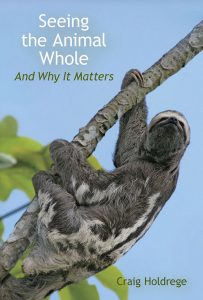
From Seeing the Animal Whole, and Why It Matters by Craig Holdrege / Lindisfarne Books / 2021.
Reprinted with permission of the publisher.



